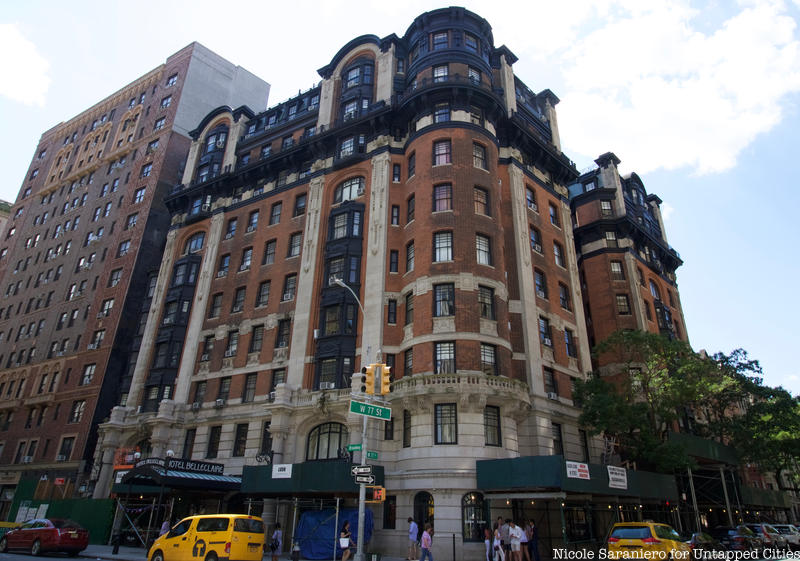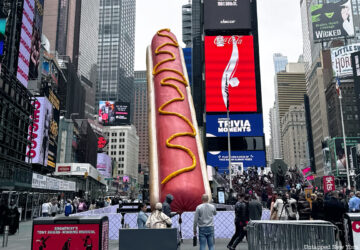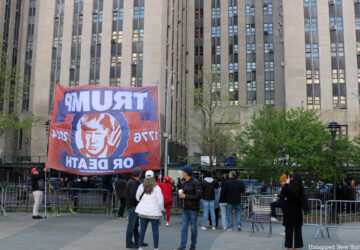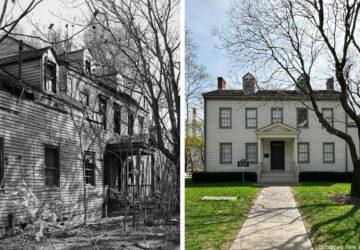4. Hotel Belleclaire, 1903

The Hotel Belleclaire, one of the first of the luxury hotels of the Upper West Side, was also a first for renowned architect Emery Roth. After this first major commission, Roth would go on to design many other distinctive apartment buildings in the area like the two-towered San Remo, Eldorado and Beresford. Like the Ansonia, the Belleclaire was labeled was an apartment hotel, a multi-dwelling property which catered to wealthy families who were used to having a house staff. The Belleclaire had ground floor restaurants and offered room service, as well as full service staff members who were at the disposal of residents. Another amenity offered to the residents of the Belleclaire was a basement bowling alley, which unfortunately was turned into storage.
The design of the Belleclaire is intentionally unique. While other apartment buildings going up at the time took cues from European styles, namely the Beaux-Art style, Roth based his design on elements of the Art Nouveau movement of France and Belgium and the Secessionism of Austria and Germany. The result is an elegant red brick building with limestone, terra-cotta and metal ornamentation. There used to be a domed cupola at the top of the building, though it has yet to be replaced.
Like many luxury apartments which flourished in the early 20th-century, The Belleclaire was deeply affected by the Great Depression. By the time of the 1939 World’s Fair, the hotel had lost many of its permanent residents and was advertised as a transient hotel in a brochure advertising a nightly rate of just $2.50 for a double room. Famous figures such as Maxim Gorky, Mark Twain and Babe Ruth have stayed there. Though there are still a few permanent residents today, the building has undergone an extensive restoration and now operates as a boutique hotel.





